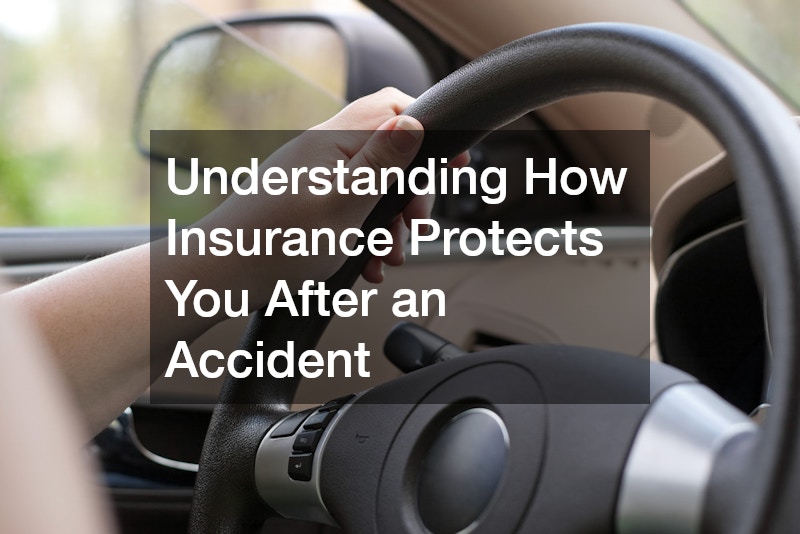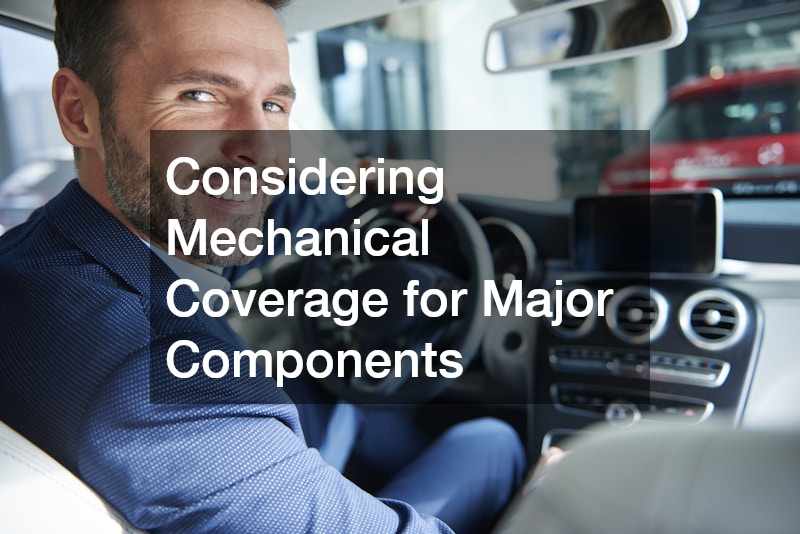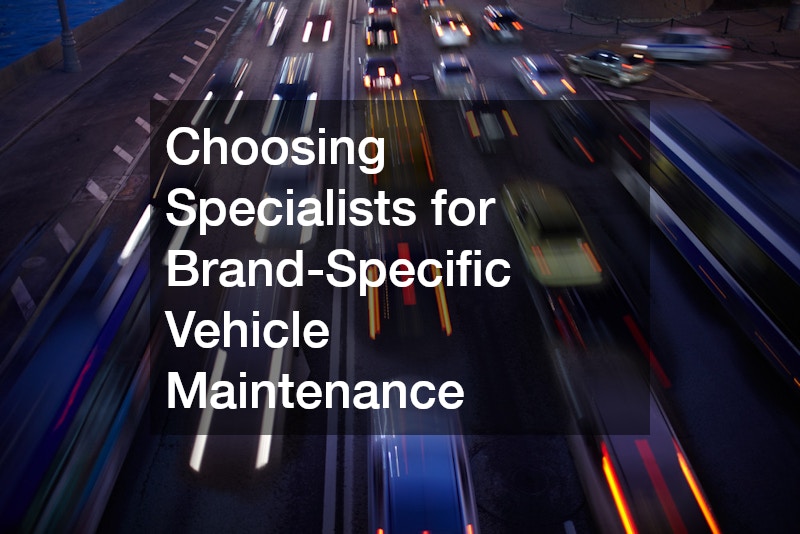Getting car insurance as a new driver can feel overwhelming, especially with so many options, terms, and coverage types to consider. Insurance isn’t just a legal requirement—it’s a financial safety net that protects you from unexpected costs after an accident or damage to your vehicle. Understanding your options early helps you make smarter decisions, avoid overpaying, and ensure that you’re properly covered when it matters most. Every policy is designed to balance protection with affordability, and knowing what each type of coverage offers will help you find the right fit for your needs. By learning the fundamentals of auto insurance now, new drivers can set themselves up for years of confident, responsible driving.
Understanding How Insurance Protects You After an Accident
At its core, car insurance provides peace of mind. It ensures that in the event of an accident, you won’t face overwhelming repair or medical costs on your own. Most policies include coverage for liability, collision, and comprehensive protection, which help pay for damage to your car and others involved in the incident. Without proper insurance, a single accident could result in financial strain, legal issues, and long-term credit problems. New drivers should focus on understanding how each coverage type applies to different scenarios so they’re prepared for anything that happens on the road.
When a collision occurs, having a trusted local auto repair shop in your network can make the claims process much easier. Insurers often work directly with repair facilities to assess damage, create estimates, and coordinate repairs quickly. Many repair shops also help drivers communicate with insurance adjusters to ensure fair coverage for parts and labor. Choosing a reputable repair partner not only simplifies the aftermath of an accident but also ensures that your vehicle is restored safely and efficiently. Knowing who to call and how to navigate post-accident repairs gives new drivers greater confidence when dealing with insurance claims.
Knowing the Connection Between Coverage and Repair Costs
Your insurance policy doesn’t just protect you in emergencies—it also influences how much you’ll pay out of pocket for repairs. Understanding the relationship between coverage limits, deductibles, and premium costs is essential for new drivers. A higher deductible often means lower monthly payments but greater responsibility for repair costs after an accident. Conversely, lower deductibles may increase your premium but reduce financial stress when something goes wrong. Being familiar with how insurance interacts with repair expenses helps you balance affordability with adequate protection.
For instance, when your car needs professional car repair after a collision, the type of coverage you have determines what your insurance will pay. Collision coverage helps repair damage caused by an accident, while comprehensive coverage pays for non-collision events like hail, theft, or vandalism. Knowing what your policy includes ensures that you’re never caught off guard by unexpected bills. Choosing the right combination of coverage and deductible makes it easier to manage repairs without jeopardizing your financial stability. For new drivers, this knowledge is key to making insurance work for you—not against you.
Considering Mechanical Coverage for Major Components
While most drivers think of insurance as protection against accidents, some policies also include or offer optional mechanical breakdown coverage. This type of protection helps pay for the repair or replacement of critical parts that fail due to wear and tear rather than collision damage. For new drivers, this can be particularly valuable since mechanical issues often occur unexpectedly and can cost thousands to fix. Coverage for major systems like the engine, transmission, and electrical components can save you from hefty repair bills and keep your car running smoothly for years. Understanding these options ensures that your insurance provides support beyond just accident-related incidents.
When reviewing your policy, it’s worth considering whether you need additional protection for components such as transmissions. These parts are essential to your vehicle’s performance but are often expensive to repair or replace. Some insurers partner with auto service providers to include extended mechanical coverage that helps minimize out-of-pocket expenses. Investing in this type of coverage can give new drivers peace of mind, especially if their car is older or out of warranty. Knowing that your insurance has your back in both collisions and mechanical breakdowns helps you maintain your vehicle’s reliability and long-term value.
Finding Reliable Partners for Post-Accident Services
After an accident, one of the first things you’ll need to do is file a claim and get your vehicle assessed for damage. Having a reliable repair facility is essential to ensuring that repairs are handled promptly and properly. Insurance companies often recommend certified repair partners that meet their standards for quality and service. Choosing a shop that is familiar with insurance procedures helps streamline communication between all parties involved, reducing the stress of the post-accident process. This partnership is especially valuable for new drivers who may be navigating claims for the first time.
Many drivers rely on trusted auto repair shops to manage insurance-related repairs from start to finish. These shops work directly with adjusters to provide accurate estimates and verify coverage details, making it easier to get back on the road quickly. They also ensure that all repairs meet manufacturer specifications, which helps maintain safety and vehicle value. As a new driver, having a dependable repair partner means you won’t have to worry about whether your claim will cover all necessary work. Instead, you can focus on recovery while professionals handle the details.
Learning When a Vehicle May Be Declared a Total Loss
Sometimes, an accident causes so much damage that repairing the vehicle is no longer cost-effective. When the repair costs exceed a certain percentage of the car’s market value, insurance companies may declare it a total loss. This can be a difficult situation for new drivers, especially if they’re unfamiliar with how insurance payouts work. In these cases, your insurer typically offers compensation based on the car’s current value rather than repair costs. Understanding this process helps you prepare for the financial implications of severe accidents.
Drivers who find themselves in this situation often turn to programs that offer cash for junk cars. These services purchase damaged or totaled vehicles, allowing owners to recover some of the car’s value instead of simply discarding it. This option can be especially useful if your insurance payout doesn’t cover everything you owe on the vehicle or if you want to quickly replace it. By knowing when a car is considered a total loss and how to handle it efficiently, new drivers can make smarter financial decisions and minimize the stress that comes with unexpected accidents.
Addressing Minor Damage Without Filing a Claim
Not every scratch or ding requires an insurance claim. In fact, filing too many small claims can increase your premiums over time. For new drivers, learning when to handle minor repairs out of pocket can help maintain lower insurance costs and avoid potential rate hikes. Small cosmetic issues like scuffs, door dings, or chipped paint can often be repaired affordably without involving your insurer. Understanding how to assess the severity of damage and make informed decisions about when to file a claim helps you save money and protect your long-term coverage options.
Using products such as car touch-up paint is an easy and cost-effective way to repair small blemishes without insurance involvement. These quick fixes restore your car’s appearance, prevent rust, and maintain its resale value. Minor touch-ups also demonstrate responsible ownership, which can make a difference if you ever decide to sell or trade in your vehicle. For new drivers, learning simple maintenance skills like paint repair not only keeps your car looking its best but also helps avoid unnecessary claims that could impact insurance premiums.
Choosing Specialists for Brand-Specific Vehicle Maintenance
If you own a specialized or luxury vehicle, standard insurance coverage may not fully account for the unique repair and maintenance costs associated with your car. Premium or foreign brands often require specific parts, diagnostic tools, and expertise, which can make repairs more expensive. As a new driver, it’s important to understand how your car’s make and model affect insurance rates and claim processing. Policies tailored for certain brands or high-value vehicles can help ensure that your car is repaired properly without sacrificing quality.
For example, drivers who rely on local german car repair specialists benefit from professionals who understand the precise engineering of brands like BMW, Mercedes-Benz, and Audi. These experts know how to work with complex systems, use manufacturer-approved parts, and maintain warranty compliance—all crucial for preserving performance and value. Insurance companies often prefer working with certified specialists because they guarantee higher repair standards and more accurate estimates. Partnering with brand-specific repair shops ensures that both your insurance and your car’s quality are fully protected after an accident.
Exploring Accessory Coverage for Aftermarket Additions
Many new drivers enjoy personalizing their vehicles with custom accessories, but not all modifications are automatically covered by standard insurance policies. Upgrades like sound systems, lighting kits, or exterior enhancements can increase both your car’s value and the cost to repair it after damage. If you’ve invested in aftermarket parts, it’s important to discuss accessory coverage with your insurer. Adding this protection ensures that your enhancements are included in your policy, saving you from paying out of pocket to replace them.
Drivers who install items such as bed covers should make sure their insurance reflects the new value of their vehicle. These accessories not only add functionality and style but also may affect your policy’s replacement cost if damaged in an accident. By updating your insurer whenever you modify your car, you can ensure that all upgrades are fully covered. Taking this step demonstrates responsible ownership and helps you avoid unpleasant surprises when filing a claim. Understanding accessory coverage is an essential part of protecting your investment as a new driver.
Protecting Custom Finishes With Specialized Coverage
Many car owners take pride in customizing their vehicles, but few realize that special finishes and coatings often require additional coverage. Standard policies may not fully cover damage to customized paint jobs or protective coatings, especially if they’re aftermarket additions. If you’ve invested in a unique look or high-end finish, it’s worth checking whether your policy accounts for those upgrades. Specialized coverage can help ensure that your car’s appearance is protected from scratches, weathering, and other forms of damage that might otherwise lead to costly out-of-pocket repairs.
Working with professionals who provide a powder coating service can help you understand how custom finishes interact with insurance protection. These experts can apply durable coatings that resist corrosion and maintain your vehicle’s appearance over time, while also documenting the modifications for your insurer. This documentation helps establish the value of your upgrades, making it easier to file accurate claims if damage occurs. New drivers who protect their vehicle’s custom features with proper coverage not only maintain their car’s value but also ensure that their insurance works in their favor when unexpected damage happens.
Understanding How Cosmetic Repairs Affect Insurance Value
Even minor cosmetic improvements can influence how your car is valued by insurers and future buyers. Dents, faded paint, or rust spots may seem superficial, but they can reduce a vehicle’s market value and insurance payout after an accident. Regularly addressing these issues shows that your car has been cared for and helps preserve its condition over time. For new drivers, learning to manage cosmetic upkeep is just as important as maintaining the engine—it demonstrates responsibility and protects your financial investment.
Professionals such as powder coaters can provide high-quality finishes that protect metal parts and improve overall appearance, giving your car a sleek, well-maintained look. These coatings also prevent wear and corrosion, extending the life of key components and reducing long-term repair costs. Maintaining a clean, polished exterior not only helps your car look better but also reinforces its value during insurance assessments. By investing in both mechanical and cosmetic upkeep, new drivers ensure that their vehicles stay in top condition—and that their insurance coverage accurately reflects that value.
Understanding your insurance options as a new driver goes beyond just choosing a policy—it’s about knowing how every aspect of vehicle ownership affects your protection. From mechanical coverage and repair partnerships to accessory and cosmetic insurance, each element plays a role in safeguarding your car and your finances. By learning how coverage connects to real-world situations, you can make confident, informed decisions that keep you secure on the road. Proper preparation today leads to peace of mind tomorrow.
Insurance isn’t a one-size-fits-all solution; it’s a partnership that evolves as your driving experience grows. Taking the time to understand your policy, maintain your vehicle, and choose reputable service providers ensures that you’re ready for whatever life on the road brings. Whether you’re managing small repairs or navigating major claims, informed choices help minimize stress and financial loss. For new drivers, mastering the connection between insurance and vehicle care is one of the smartest steps toward becoming a responsible and confident car owner.






